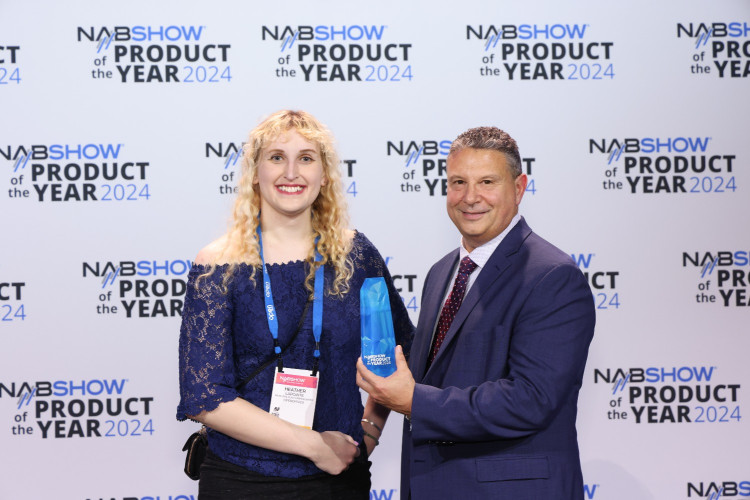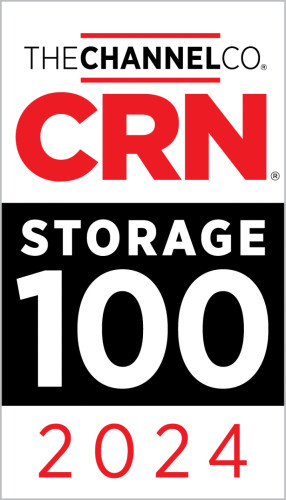by Rino Petricola Issue 85 - January 2014 Media asset management: what exactly is it?
While the precise definition varies from person to person, a common description tends to emerge. Media asset management (MAM) is a solution that allows media content including audio, video, and graphics to be ingested, annotated, cataloged, managed, protected, searched, manipulated, tracked, stored, and retrieved by users based on permissions.
What are the major benefits that a user can expect from a MAM system?
The ability to access, browse, and query file-based archives easily via a simple, unified desktop interface enhances the overall creative process by minimizing the complexities of underlying formats and high-resolution file storage locations. It also provides a multitude of ways to search and locate content easily. Most MAM systems allow users to create shot lists directly from the desktop, and some facilitate simple, frame-accurate cut editing by leveraging the functionality of the backend content storage management (CSM) or archive solution. With this desktop access, creative staff can better manage, easily repurpose, and truly drive the nonlinear creation process.
A MAM system not only gives users access to their rich content repositories, but also the ability to search those repositories in an intuitive environment, so that they can focus on the creative process rather than the availability of videotape machines, edit bays, etc. Most MAM systems permit advanced metadata searches often augmented by visual cues (keyframes) associated with proxies of the high-resolution content, allowing contextual as well as scene-based searches. MAM systems search across annotated segments of the content, often leveraging closed captioning text and perhaps even supplemented by voice recognition metadata, transcripts, etc. These features combine to provide a powerful search mechanism across asset, technical, and contextual metadata. Can a MAM system add revenue streams to a users portfolio?
Yes, its possible. Leveraging MAM and a digital asset repository (a CSM system) means users can focus on the creative process rather than technical challenges, format compatibility, migration, etc. This more intense focus on creativity can allow new avenues for revenue generation to evolve more quickly. Further, by enabling the testing of these new revenue opportunities without having to make a large investment in infrastructure or staff, MAM systems can make the organization more agile and better able to start and stop these initiatives based on results.
What is required to ensure that a MAM system brings real value to the organization?
Metadata accuracy through the entire content lifecycle is key to any enterprise MAM system. Enrichment of technical metadata during capture, migration, and ingest should be married with program and contextual metadata as it flows through the production, transmission, and online chains. Each consumption mechanism will have its own specific requirements. It is also imperative that the MAM be able to map, translate, extract, and publish metadata from the growing repository over time in order to feed these consumption and monetization paths accurately.
Isnt the cost of deploying a MAM solution prohibitive? Is there an affordable way to get the benefits?
It is true that implementing a new MAM solution involves far more than just buying a technology; it requires leadership, governance, technical integration, cultural change, and user adoption to make it work. Over the past decade, many customers have implemented media asset management workgroups and systems across the media lifecycle, from ingest and production to transmission, and most of the time these implementations represented huge investments.
However, with the maturity of cloud services today, customers can avoid those upfront investments. By simply moving their content into the cloud, they can easily and immediately realize these key benefits of an in-house MAM system:
- Improved utilization of production infrastructure
- Collaboration across departments
- Content visibility and optimization
- Automation of manual processes
- Consistent metadata capture and protection throughout the media lifecycle
- Improved discovery and utilization of archived assets
- Production and multiplatform distribution combined into a single, le-based workow
- Lower production cost and less time to create higher-quality content
- Creation of an agile infrastructure that supports changing needs
- Lower aggregate storage cost through tiered storage management Taking a cloud approach helps organizations incorporate MAM systems affordably in order to realize concrete cost savings, significant workflow efficiencies, and, typically, potential new revenue streams that result in additional financial benefits.
What other benefits does the cloud bring to MAM?
The cloud can completely transform a business by creating new revenue streams or entirely new businesses. In the media and entertainment industry, companies large and small store and manage their digital assets by investing in MAM software, storage technologies, servers, and the personnel to maintain and support the environment. This means they rely on localized racks of servers, which are expensive and most often underutilized, and require upgrades every two to three years. An on-site infrastructure is expensive and time-consuming enough to maintain so that it meets a broadcasters local MAM needs, so imagine the costs associated with establishing the same infrastructure and support around the globe to meet the needs of a global organization or workforce!
A cloud-based MAM system, on the other hand, working in concert with a CSM system, improves upon that approach. For companies that have bought MAM software and the hardware to run it, and hired or allocated the IT staff to maintain it, a cloud-based MAM/CSM system will significantly lower their costs. Why? Because there is no upfront investment in software or hardware, and the MAM/CSM provider takes care of all the maintenance and upkeep all for a low monthly price based on usage. A cloud-based MAM/CSM system is not only affordable; its absolute nirvana for those who are tasked with finding, reformatting, and distributing assets on request to everyone who needs access to them. With a cloud-based MAM/CSM system, the assets are available at the fingertips of any authorized users, so they can size and format the assets as needed themselves.
Besides saving the cost of infrastructure, equipment, maintenance, staff, and physical space, the cloud delivers even more benefits:
- Cloud-based applications are accessible from anywhere in the world, both inside and outside corporate offices
- Faster deployment speeds: cloud-based technologies provide the ability to get applications up and running and expand the IT resources they use much faster than with on-premises solutions
- Flexible and scalable: cloud-based infrastructure and a pay-as-you-go model give companies an always-available application that can scale to accommodate peaks in usage without affecting the bottom line. This benefit is particularly helpful for fast-growing companies that might not be able to afford the upfront investment in a server infrastructure that would scale as quickly as the organization
- Greater availability of the content for protection, preservation, duplication, and health check
- Reliability: cloud providers offer service guarantees for business continuity in the face of disaster or network interruptions
- Cloud is an operational cost rather than an investment cost. Acquiring expensive equipment is a capital expenditure one that depreciates over time. Cloud computing means that one-time capital expenditure can be spread across several operational cycles, thus becoming part of the organizations operational cost
- Staff members that were hired to manage IT infrastructure can now be assigned to other areas, such as support
Ask the experts: What is MAM?

Author: Rino Petricola
Published 1st February 2014



































